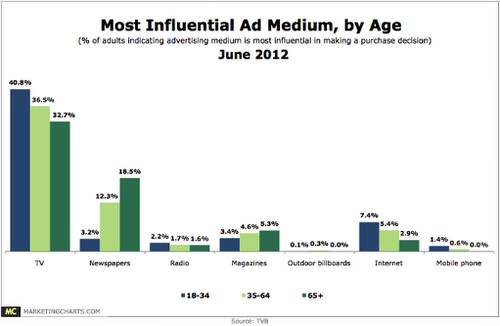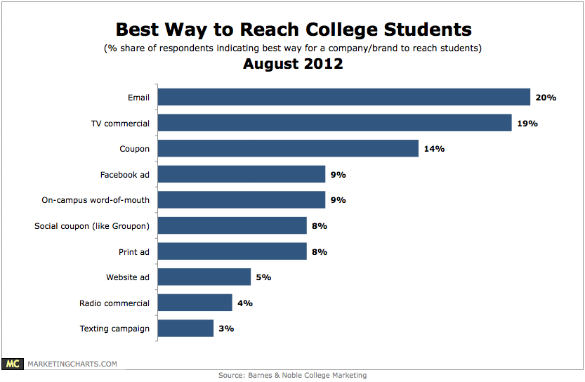
Facebook is reportedly working on full-screen autoplay video ads it will supposedly roll out no later than this summer. Facebook is expected to charge nearly $1 million for these new ads, which are designed to leverage Facebook’s massive scale — but not the company’s vaunted “social graph.”
And that assumes Facebook users will sit still for ads that, per current reports, will take over your desktop screen and run for 15 seconds, up to three times a day per user. What are the odds of that?
According to a report in Ad Age, the social media giant wants to offer at least four separate full-screen video ads every day. Facebook has reportedly been working with the ad industry on this effort since at least late last year. Initially, the 15-second autoplay ads will appear on Facebook’s desktop site; the social network is still working to bring them to its mobile app as well.
I contacted Facebook for comment. A spokesperson’s response: “We’re not giving a comment here.”
The Coming War With TV
If successful, the new ad platform could bring in nearly $1.5 billion in additional revenue to Facebook — and might also kick off a war with the television industry for major ad dollars.
Television advertising in the U.S. alone generates over $70 billion in annual revenue — and the market is, surprisingly, still growing. Facebook’s new ads, though, could pose a direct threat. One of the core strengths of television advertising is its ability to “aggregate eyeballs” — that is, to bring together large numbers of people across multiple demographics. Facebook’s proposed new ad units would emulate this.
For example, Facebook is expected to offer four daily “slots” for its video ads, each targeting a very large demographic:
- Women over 30
- Women under 30
- Men over 30
- Men under 30
According to Ad Age, Facebook will cap the ads so that no user will see an ad more than three times in a day. It is still unclear if advertising executives will want to cut down the typical 30-second television ad to fit Facebook’s 15-second guideline, or if they’d create new ads especially for Facebook.
Scale Not Social
For all its talk about the inherent value of its “social graph” — Facebook’s supposedly unique understanding of its one billion users, their likes, dislikes and relationships — these proposed video ads owe basically nothing to the social graph and in this case, Facebook is relying upon its nearly unprecedented scale. There are few online properties – or any media properties of any sort – that can command massive network television-like audiences the way Facebook can. The front page of Yahoo, YouTube and Google may be the only equivalents.
Such ads may also mark a strategic reversal inside Facebook. Just last summer, the company denied GM’s request for full-page “takeover” ads. At the time, Facebook’s VP for Global Marketing suggested that brands should focus on “social ads” and did not expect “traditional home-age takeover” ads in Facebook’s future.
That is apparently no longer the case. Not that this is a bad thing. Facebook is probably wise to focus on new methods of monetizing its scale — and leveraging the potential of video display ads. If successful, such ads could even become a daily ritual — generating buzz that’s the equivalent of America’s Super Bowl.
Consider that for this year, 30-second Super Bowl ads on television cost advertisers $3.8 million. The event had 111 million viewers. Facebook may be able to promise its advertisers a far larger audience every day. What Facebook can’t yet promise, of course, is whether its billion users will actually sit through — or even tolerate — such intrusive ads, even just once.
Television Still Preferred For Now
Despite its scale, Facebook must prove it can offer advertisers the equivalent of network television. Consumer surveys reveal that television advertising stands above all others in terms of influencing purchase decisions.

Even amongst college students, for example, who are likely to be very social media savvy, television advertising is clearly the most influential of all.

At least in theory, the combination of Facebook’s scale, a full-page video ad takeover and, in time, linking views and reactions to the platform’s “social graph” could turn the tide in Facebook’s favor. There are also obvious opportunities for Facebook to leverage its scale, social graph and the “second screen” to help foster innovative advertising forms that span television, mobile and the Facebook site simultaneously. Earlier this year, for example, Facebook promoted the Academy Awards broadcast and provided data on how users responded to award winners in real-time.
Facebook claims 680 million “active” monthly mobile users. If Facebook can leverage its scale across desktop and mobile, whether or not it simultaneously incorporate their knowledge of each user, these new video ads could be a huge success.
Lead image via Flickr user brewbooks










